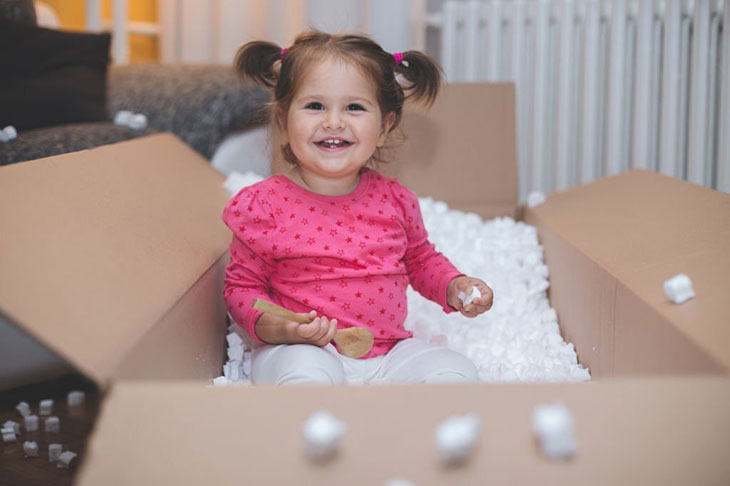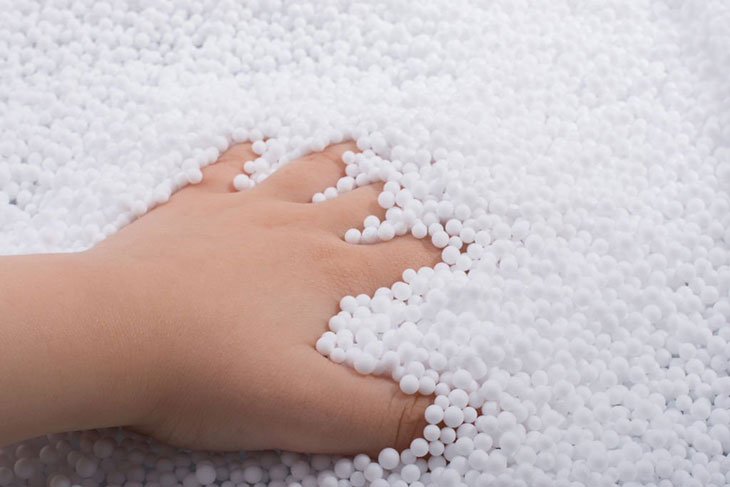Have you ever wondered why a toddler might be tempted to eat Styrofoam?
While it may seem unusual and concerning, young children are known for their curious and exploratory nature.
However, consuming Styrofoam can pose various risks to a child’s health and well-being.
In today’s post, I will go into the reasons why a toddler ate Styrofoam and shed light on the importance of addressing this issue.
Toddler Ate Styrofoam – What Are The Reasons?

A baby swallowed Styrofoam might be due to sensory exploration or pica disorder. Otherwise, they just seek attention or elicit a reaction from caregivers.
It’s also a sign of imitation if the child has observed others engaging in similar behavior.
Sensory Exploration
Toddlers are in a critical stage of sensory development, where they are actively exploring the world around them through their senses.
Particularly, they are interested in tactile and oral experiences as they navigate their environment.
Therefore, the texture, lightness, and crunchiness of Styrofoam and other foreign objects can be intriguing for a kid, leading them to investigate it further by putting it in their mouths.
Pica Disorder
Pica disorder is characterized by persistent and compulsive ingestion of non-food items. This disorder can affect people of all ages, including toddlers.
Children with pica disorder often experience intense cravings or an appetite for substances not typically considered food.
This can include items like dirt, paper, clay, chalk, and, in this case, pieces of Styrofoam.
The specific reasons behind these cravings are not fully understood, but they may be influenced by factors such as sensory satisfaction, nutritional deficiencies, or psychological factors.
Attention-Seeking Behavior
Attention-seeking behavior can also be a reason why a child ate Styrofoam. Toddlers have a natural desire for attention and interaction from their caregivers.
In some instances, they may engage in behaviors they believe will draw attention, whether positive or negative.
Sometimes, my kid even puts household items into her mounth if she is not receiving adequate attention or positive interactions from me.
Imitation
Toddlers are keen observers and imitators. They often learn by mimicking the actions and behaviors they see in others, particularly their parents, siblings, or peers.
If your baby witnesses someone else eating a block of Styrofoam or engaging in similar behavior, they may imitate it without fully understanding its consequences or purpose.
What Happens If A Child Eats Foam?

When a child accidentally ate Styrofoam, several potential risks and complications can arise. Here are some possible consequences:
Choking Hazard
Foam is not meant to be consumed and can pose a significant choking hazard.
If the youngster bites off or swallows a large styrofoam piece, it can become lodged in the throat, blocking the airway and making breathing difficult for the child.
Choking is a major medical issue that needs to be treated right away, even when your little one is just choking on saliva.
Once a child shows breathing issues on foam or any sharp object, it is important to seek emergency medical assistance immediately.
If trained, perform appropriate first aid treatment techniques such as the Heimlich maneuver or back blows.
Gastrointestinal Blockage
A baby consuming a substantial amount of foam can create a blockage in the gastrointestinal tract.
This blockage can prevent food and other substances from passing through the digestive system properly.
Consequently, your kid may experience abdominal pain, difficulty breathing, nausea, vomiting, and constipation.
When my baby happens to take in some foam, she even makes gasping sounds but breathes fine.
In many cases, surgical intervention may be necessary to remove the blockage and restore normal digestive function.
Chemical Exposure
The specific risks depend on the type of foam involved, as different types of foam may contain various chemicals.
For example, Styrofoam, commonly used for packaging and insulation, is made of synthetic polystyrene.
Polystyrene may contain chemical styrene, a potential human carcinogen, and a youngster may be exposed to chemicals if they consume dangerous compounds.
In addition, the health effects of harmful chemical exposure can range from toxicity to organ damage to allergic reactions in the long term.
The specific chemicals involved and the amount consumed determine the severity of the effects.
Allergic Reactions
What happens if you swallow Styrofoam? Some individuals may have allergies or sensitivities to the materials used in foam products, such as latex or certain chemicals in foam.
When a baby with a known allergy or sensitivity ingests foam or comes into contact with it through their mouth, they may experience an allergic reaction.
The styrofoam poisoning symptoms can vary in severity and can manifest as skin rashes, itching, swelling (especially around the mouth and throat), difficulty breathing, wheezing, or even anaphylaxis.
How To Prevent A Kid From Eating Styrofoam?

Here is some effective care advice to consider:
Supervision
To prevent a child from eating styrofoam pieces, it is crucial to be present and actively supervise them, particularly during playtime or when the common items are accessible to them.
Avoid leaving the child unsupervised in areas with styrofoam objects or packaging materials.
Substitute With Safe Toys
Substitute Styrofoam with safe toys and objects to minimize the child’s exposure.
Instead of providing styrofoam-based items, I always opt for toys made from non-toxic materials designed for safe play.
This substitution helps redirect the child’s attention and reduces the risk of them attempting to eat or handle Styrofoam.
Educate And Explain
You can use age-appropriate language and activities to teach them that Styrofoam is not food and should not be consumed.
Take the time to explain the potential harm it can cause, such as choking or stomach problems.
With clear and simple explanations, you can help your child understand why eating sponges is unsafe and discourage them from doing so.
Proper Storage
- Store Styrofoam Safely: Keep styrofoam objects or packaging materials in secure containers, cabinets, or areas outside the child’s reach.
- Use Sealed Bags or Containers: If you have small pieces of Styrofoam that are difficult to store individually, place them in sealed bags or containers to prevent the child from getting to them.
- Dispose of Styrofoam Properly: When disposing of Styrofoam, make sure to do it so the child cannot access it.
Seal it in garbage bags or use designated recycling bins to eliminate the risk of the child finding and attempting to eat discarded Styrofoam.
- Be Mindful of Loose Styrofoam: If you have styrofoam packaging material, such as peanuts or small loose pieces, be careful not to leave them lying around.
Clean and dispose of them promptly to keep the child from mistaking them for toys or food.
FAQs
Is It Harmful If My Toddler Ingests A Small Amount Of Styrofoam?
Ingesting a small amount of Styrofoam is generally not considered life-threatening, but it can still pose risks such as choking or gastrointestinal discomfort.
Therefore, monitor your child closely for signs of distress and consult a healthcare professional with concerns.
Is It Normal For Toddlers To Eat Non-Food Items Like Styrofoam?
No, it is not normal for toddlers to eat non-food items like Styrofoam.
While exploring and putting objects in their mouth is common for young children, persistent or excessive consumption of non-food items is not typical and may indicate an underlying issue.
Suppose you notice your toddler constantly showing an interest in eating non-food items.
In that case, it is important to consult a healthcare professional to determine the cause and address potential concerns or conditions such as pica disorder.
Conclusion
As it can be alarming to discover that a toddler has eaten Styrofoam, understanding the situation and taking appropriate action is significant.
By identifying the underlying reasons for this behavior of why a toddler ate Styrofoam and implementing preventive measures, you can help keep your child safe and encourage healthy exploration.
Thank you for your time reading the post. See you around!
